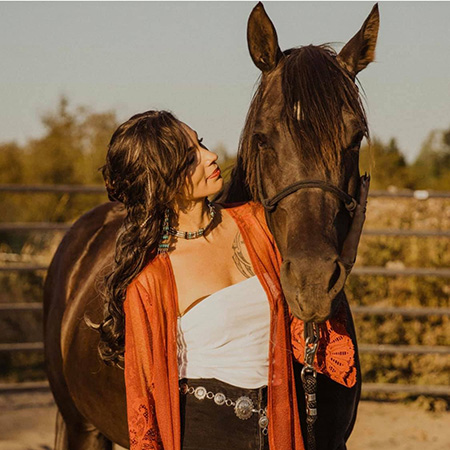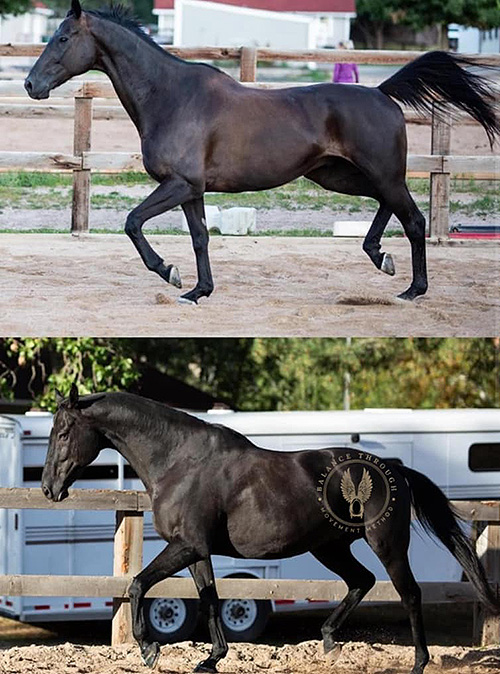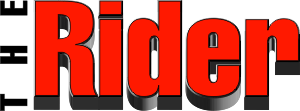 A Revolutionary Approach to Equine Wellness.
A Revolutionary Approach to Equine Wellness.
The Balance Through Movement Method™ (BTMM) was born out of the necessity to address the persistent issues surrounding undiagnosed lameness in horses. Developed by competitive rider and professional horse trainer Celeste Lazaris, this innovative approach arose from her frustration with the lack of answers for many equine lameness problems that remained unexplained and unresolved.
In 2016, Celeste made a pivotal decision to step away from training and return to school, pursuing credentials as both a human and equine massage therapist. Her studies in human anatomy introduced her to the complexities of nerve compression syndromes and the myriad of holistic treatments that could be achieved through bodywork and targeted movement exercises. Yet, her equine studies lacked the same depth of information, leaving a gap that she felt compelled to fill.
 After dedicating two years to clinical practice, collaborating closely with Doctors and Surgeons on nerve compression cases in humans, Celeste began applying her manual therapy techniques to the horses in her program, treating undiagnosed lameness as if the horses were suffering from nerve compression issues.
After dedicating two years to clinical practice, collaborating closely with Doctors and Surgeons on nerve compression cases in humans, Celeste began applying her manual therapy techniques to the horses in her program, treating undiagnosed lameness as if the horses were suffering from nerve compression issues.
Initially, Celeste focused on the brachial plexus, a crucial network of nerves located beneath the shoulder blade and neck.
Compression in this area is incredibly common due to an underdeveloped thoracic sling and can lead to significant discomfort, radiating pain throughout the neck, withers, girth line, and down the front limbs, often resulting in lameness or instability, such as an inability to lock carpal joints effectively.
Her success in alleviating discomfort in this region was remarkable, prompting her to expand her focus to the lumbosacral plexus. This involved addressing symptoms of sciatica, which often presented as bucking, bolting, and hind limb lameness. She also found success in alleviating symptoms associated with shivers and stringhalt which she suspected was due to compression of the femoral nerve.
 With her newfound insights, Celeste meticulously mapped out the equine body, identifying key points of nerve flow and subsequently developing the Lazaris Nerve Technique™. This comprehensive method targets the entire body to restore healthy nerve function through both manual therapy and movement exercises.
With her newfound insights, Celeste meticulously mapped out the equine body, identifying key points of nerve flow and subsequently developing the Lazaris Nerve Technique™. This comprehensive method targets the entire body to restore healthy nerve function through both manual therapy and movement exercises.
The transformative results she achieved with previously overlooked horses led to an explosion of interest in her services.
However, Celeste soon realized that while her manual bodywork techniques brought profound relief, they were not a complete solution. The trainer in her recognized that if the movements utilized in her nerve release sessions could be integrated into training sessions, horses would no longer need what she termed “band-aid” treatments. Instead, they could train for soundness and health, leading to the birth of the Balance Through Movement Method™ (BTMM).
The Balance Through Movement Method™ (BTMM) is often jokingly referred to as a "method against methods," as it intentionally avoids confining horses and riders into a rigid program. Instead, BTMM focuses on educating and empowering horse owners with a clear, concise set of principles designed to train their horses in a manner that prevents nerve compression injuries. The overarching goal has always been to create a training program that nurtures both the physical body and the nervous system, making it adaptable to any discipline and suitable for riders of all experience levels.
Within it are the 3 Pillars:
Pillar 1 – Relationship to Connection
At BTMM, we emphasize the importance of a horse’s nervous system in how it relates to their relationship to connection as the foundation for their overall well-being.
This principle is our top priority in all aspects of our work.
Pillar 2 – Center of Balance
Taking the relaxation and gentle activation found in Pillar 1 into finding core stability and developing the muscles necessary for self-carriage from the thoracic sling down through the hind end.
Pillar 3 – Spinal Integrity
Many horses tend to over-rely on their neck and back due to inadequate range of motion (ROM) in their limbs. This overcompensation can lead to a myriad of issues, including nerve dysfunction and dural torque resulting from compromised spinal integrity, as well as excessive wear and tear on joints, so this last pillar is focused on restoring just that
Today, BTMM has garnered a global community of over 5,000 horse enthusiasts, each experiencing remarkable success stories in their varied disciplines as well as being used by Veterinarians all around the world. From horses that were once scheduled for euthanasia but have since been rehabilitated, to supporting our client that just competed at the 2024 Equestrian Olympics, this work is for everyone.
Offerings
We offer a comprehensive masterclass that delves deeply into the three pillars of BTMM. This course includes access to a complimentary Facebook group where participants can receive valuable feedback on their progress from our certified trainers. Additionally, we launch a self-study program once a year, allowing anyone to learn the fundamental moves of the Lazaris Nerve Release Technique (LNRT).
For those seeking personalized guidance, we provide the opportunity to book one-on-one sessions with our certified trainers or nerve release practitioners through our website - www.balancethroughmovementmethod.com
Source: BTTM


